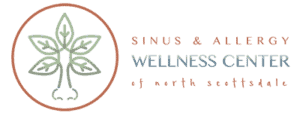The Basics of Nasal Breathing: Techniques and Benefits
Breathing is one of the most important things that our body does for us—it brings oxygen into our body and expels carbon dioxide. While breathing is an involuntary process, there are different types of breathing we can do that benefit us in various ways. For example, we can breathe through our mouth or nose. Did you know that nasal breathing is significantly better for our health?
Nasal breathing can actually improve sleep, immunity, focus, and more. At the Sinus and Allergy Wellness Center in Scottsdale, Arizona, we’re passionate about educating our patients about the benefits of nasal breathing vs. mouth breathing.

Why Nasal Breathing Matters
Your nose does more than just help you breathe. As you breathe through your nose, tiny hairs and mucus membranes trap allergens, dust, and pathogens. At the same time, the nasal passages humidify and warm the air before it reaches your lungs. This helps protect your respiratory system, improve oxygen absorption, and even support your immune health through the production of nitric oxide—a natural antimicrobial gas your sinuses release.
In contrast, mouth breathing bypasses all of these defenses. It brings dry, unfiltered air straight into the lungs, which can lead to irritation, poor sleep, and even chronic fatigue. For those living in Scottsdale’s dry, desert climate, where dust, pollen, and low humidity are constant challenges, nasal breathing is essential. It helps moisturize the air, trap irritants, and reduce the impact of seasonal allergies, keeping your airways clearer and your breathing more efficient.
Five Health Benefits of Nasal Breathing
Key health benefits of nasal breathing include:
- Improved oxygen absorption: Nitric oxide production in the sinuses aids circulation
- Better sleep quality: Reduced snoring and sleep apnea symptoms lead to more peaceful nights
- Stronger immunity: Nasal breathing filters allergens and pathogens, fighting off illnesses
- Boosted athletic performance: Physical endurance and respiratory efficiency are enhanced through nasal breathing
- Mental clarity and focus: Steadier breathing calms the nervous system
Common Barriers to Nasal Breathing
- Chronic nasal congestion (allergies, sinusitis, deviated septum)
- Seasonal allergies in the Scottsdale area
- Nasal polyps or structural issues
- Mouth breathing habits from childhood
If any of the above is you, schedule a visit with the team at Sinus and Allergy Wellness Center in Scottsdale today. We can provide a comprehensive nasal and sinus evaluation and put together a treatment plan that can get you feeling better immediately.
Three Nasal Breathing Techniques to Try
Here are some practical, easy-to-follow nasal breathing methods. If you have any existing sinus or breathing issues, be sure to consult your medical team before trying new techniques.
- Alternate Nostril Breathing (Nadi Shodhana): Helps with stress reduction and airflow balance
- Box Breathing (4-4-4-4 Method): Enhances focus and lung control
- Mouthtaping: Helps chronic mouth breathers adapt to nasal breathing
When to Visit Your Sinus and Allergy Team
Suppose you’ve tried to improve your nasal breathing at home, and already deal with chronic snoring, sinus infections, and fatigue. In that case, it’s time to book an appointment with your provider. Additionally, if you’re a Scottsdale resident who is sensitive to seasonal allergies and the congestion that comes with allergies, be sure to schedule a time to be seen. At Sinus & Allergy Wellness Center in Scottsdale, we can provide a variety of treatment options, including:
Allergy Testing
Allergy testing helps identify specific triggers. Allergy testing can help identify particular triggers such as pollen, mold, pet dander, or certain foods. Your provider will determine which tests are medically appropriate for your individual situation.
Over-the-counter (OTC) medications
OTC medications are widely used to manage allergy symptoms. They are easily accessible and provide quick relief for mild to moderate symptoms.
Antihistamines are the most common OTC allergy medications. They work by blocking histamine, a chemical the immune system releases during an allergic reaction. This can help reduce symptoms like sneezing, itching, and a runny nose.
Decongestants can help relieve a stuffy nose, a common symptom of respiratory allergies. Corticosteroid creams or sprays can reduce inflammation and alleviate skin allergies.
Prescription medications
Prescription medications are used for more severe or persistent allergies. They are typically stronger than OTC medications prescribed by a healthcare provider.
Prescription antihistamines can provide longer-lasting relief than their OTC counterparts. They can be handy for managing chronic allergies.
Corticosteroids, available in various forms, can reduce inflammation caused by allergies. They can be used for skin, respiratory, and severe food allergies.
Other prescription drugs target specific allergy symptoms. For example, leukotriene modifiers can help manage asthma symptoms associated with allergies. Nasal ipratropium can relieve a runny nose caused by allergies.
Immunotherapy
Allergy immunotherapy is a treatment approach that aims to desensitize the immune system to allergens. It involves exposing the body to small doses of an allergen over time, which can help reduce the severity of allergic reactions.
Sublingual immunotherapy (SLIT) is a newer method of immunotherapy that involves placing drops under the tongue, which contains small amounts of an allergen and is allowed to dissolve.
Immunotherapy can be effective for various types of allergies, including seasonal respiratory allergies, allergic asthma, and allergy induced airway infections. It is typically used when symptoms are severe, persistent, or poorly controlled by medications.
Balloon Sinuplasty
For some patients whose allergies have contributed to chronic nasal breathing and sinus issues, balloon sinuplasty may be recommended to open blocked sinus openings. This minimally invasive procedure gently restore blocked sinus passages to their maximum diameter. Balloon Sinuplasty is typically performed in the office under local anesthesia with mild pill induced sedation. Most patients report shorter recovery times compared to traditional sinus surgery, though comfort and healing experiences can vary.
Wrapping Up
Nasal breathing is simple, powerful, and often overlooked. Be sure to take a look at your breathing habits today and reflect on your wellness, sleep, and energy levels—are there any areas for improvement? Making a positive change to your breathing routine might be the tweak you need for success.
Disclaimer:
The information provided in this article is for informational and educational purposes only and does not constitute medical advice. It is not intended to diagnose, treat, cure, or prevent any disease or medical condition. Always seek the guidance of your physician or other qualified healthcare provider with any questions you may have regarding a medical condition or treatment.
Results may vary: Treatment outcomes and health experiences may differ based on individual medical history, condition severity, and response to care.
Emergency Notice: If you are experiencing a medical emergency, call 911 or seek immediate medical attention.



